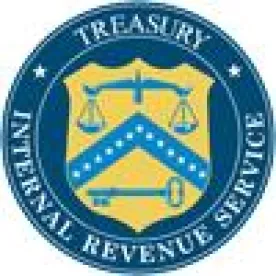The proposed regulations may have a significant impact on certain “management fee waiver” arrangements that have become commonplace in the investment management industry.
On Wednesday, July 22, the US Internal Revenue Service (IRS) released proposed regulations (REG-115452-14) under Section 707 of the Internal Revenue Code of 1986, as amended (the Code) regarding when an arrangement will be treated as a disguised payment for services under Section 707(a)(2)(A) of the Code (the Proposed Regulations).
The Proposed Regulations also include conforming changes to the regulations governing guaranteed payments under Section 707(c) of the Code, and, in the preamble to the Proposed Regulations, notice of proposed modifications to Rev. Proc. 93-27 (guidance on the treatment of the receipt of a profits interest for services provided to or for the benefit of the partnership) as clarified by Rev. Proc. 2001-43 relating to the issuance of interests in partnership profits to service providers.
The Proposed Regulations may have a significant impact on certain arrangements (commonly known as “management fee waivers”) that have become commonplace in the investment management industry.
General Rules
In general, Section 707(a)(2)(A) of the Code provides that where a partner performs services for a partnership and receives a related direct or indirect allocation of income and distribution from the partnership, the transaction can, in certain circumstances, be treated as a “disguised payment for services.”
Identifying a “Disguised Payment For Services”
The Proposed Regulations provide guidance for determining when a purported allocation and distribution should be viewed as a disguised payment for services.
Under the Proposed Regulations, an arrangement is treated as a disguised payment for services if
-
a person (service provider), either in a partner capacity or in anticipation of being a partner, performs services (directly or through its delegate) to or for the benefit of the partnership;
-
there is a related direct or indirect allocation and distribution to the service provider; and
-
the performance of the services and the allocation and distribution, when viewed together, are properly characterized as a transaction occurring between the partnership and a person acting other than in that person’s capacity as a partner.
The Proposed Regulations provide six non-exclusive factors to be used in determining whether an arrangement constitutes a disguised payment for services. The most important factor is whether the arrangement has significant “entrepreneurial risk.” Under the Proposed Regulations, the following facts and circumstance create a presumption that an arrangement lacks significant entrepreneurial risk:
-
Capped allocations of partnership income (if the cap is reasonably expected to apply in most years)
-
An allocation for one or more years under which the service provider’s share of income is reasonably certain
-
An allocation of gross income
-
An allocation (under a formula or otherwise) that is predominately fixed in amount, is reasonably determinable, or is designed to assure that sufficient net profits are highly likely to be available
-
An arrangement in which a service provider waives its rights to receive payment for the future performance of services in a manner that is non-binding or fails to timely notify the partnership and its partners of the waiver and its terms
The other five non-exclusive factors (in addition to significant entrepreneurial risk) to be used in determining whether an arrangement constitutes a disguised payment for services are the following:
-
The service provider holds, or is expected to hold, a transitory partnership interest or a partnership interest for only a short duration.
-
The service provider receives an allocation and distribution in a time frame comparable to the time frame that a non-partner service provider would typically receive payment.
-
The service provider became a partner primarily to obtain tax benefits that would not have been available if the services were rendered to the partnership in a third-party capacity.
-
The value of the service provider’s interest in general and continuing partnership profits is small in relation to the allocation and distribution.
-
The arrangement provides for different allocations or distributions with respect to different services received, when the services are provided either by a single person or by persons who are related under Sections 707(b) or 267(b) of the Code, and the terms of the differing allocations or distributions are subject to levels of entrepreneurial risk that vary significantly.
Application to Management Fee Waivers
In the investment management industry, it has become relatively commonplace for investment managers to waive all or a portion of the management fee to which they would otherwise be entitled in respect of services provided to a fund client in exchange for a corresponding increased interest in the future net profits of the fund. Managers who also serve as general partners in a fund client may utilize this technique to satisfy their required capital contributions to the fund (i.e., they will not contribute their share of a required capital call, but instead a portion of the net profits of the fund in an amount equal to their required contribution will be allocated to them). The more aggressive of these arrangements involve waivers of management fees that have in part already accrued, or that relate to allocations of net profit that are relatively sure to occur over the short term.
The benefits to managers (and in certain cases, to investors) of these arrangements is that in funds producing largely capital gains—such as most private equity funds—managers may achieve a substantially lower tax rate on the amount attributable to the waived fee, which otherwise would be treated as ordinary income (and also could subject managers to significant additional tax, as deferred compensation arrangements, under Sections 409A or 457A of the Code). In addition, US taxable investors, who in many cases would be required to treat their share of a management fee as a “miscellaneous itemized expense” subject to limitation, would instead see a dollar-for-dollar reduction in their taxable income.
The typical management fee waiver arrangement would satisfy the first two criteria used in determining whether an allocation and distribution constituted a disguised payment for services (i.e., there is a person providing services to a partnership and a related allocation or distribution to that person). Accordingly, the key issue is whether the services and the allocation/distribution, taken together, are properly characterized as a disguised payment for services. That, in turn, depends on an analysis of the six factors identified in the Proposed Regulations, with the most significant being whether the arrangement presents significant entrepreneurial risk.
Four of the six examples contained in the Proposed Regulations directly address management fee waiver structures. From those examples, it seems clear that the IRS views certain factors as counting favorably towards treating a purported fee waiver in accordance with its form, including
|
(a) |
that the partnership maintains capital accounts in accordance with the Treasury Regulations, including that it liquidates in accordance with positive capital account balances (with the preamble to the Proposed Regulations specifically providing no guidance on whether typical “target capital account” allocations satisfy this requirement); |
|
(b) |
that the fee waiver interest entitles its holder to an allocation of net profits over the life of the fund, rather than an allocation of gross income, or of profits only over a certain period; |
|
(c) |
that the recipient of the fee waiver interest is subject to a “clawback” obligation in the event that its share of net profits over the life of the fund are less than the amount allocated to it; and |
|
(d) |
that the recognition net profits are not under the control of the fee waiver interest recipient or a related party and are otherwise not substantially certain to be recognized. |
By contrast, where the fee waiver interest is measured over a limited period (for example, it is based on net profits over any 12 month period in which there is net profits), and particularly where recognition of profits over that period are controlled by the recipient or a related party (for example, where a general partner can control the disposition or revaluation of fund assets), it is more likely that the IRS will view the arrangement as a disguised payment in respect of services.
Timing Issues, Rev. Proc. 93-27 Safe Harbor
The Proposed Regulations provide that the determination of whether a purported allocation and distribution arrangement is actually a disguised payment for services is made upon issuance of the interest, even where amounts subject to it may not be paid until significantly later. This would impact multi-year measurement interests where the existence of net profits (or the payment of such net profits) is measured over several years.
In addition, the preamble to the Proposed Regulations notes that the IRS plans to issue a new exception to the safe harbor of Rev. Proc. 93-27. The additional exception will apply to a profits interest issued in conjunction with a partner (or an associated service provider, such as a management company) forgoing payment of an amount that is substantially fixed, including a substantially fixed amount determined by formula (such as a fee based on a percentage of partner capital commitments) for the performance of services, including a guaranteed payment under Section 707(c) or a payment in a non-partner capacity under Section 707(a) of the Code. This would take typical management fee waiver interests (including those that otherwise meet the requirements of the Proposed Regulations and are not treated as disguised payments for services) out of the safe harbor for profits interests provided by Rev. Proc. 93-27.
Proposed Effective Date
The Proposed Regulations are effective on the date the final regulations are published in the Federal Register and would apply to any arrangement entered into or modified on or after the date of publication of the final regulations. The Proposed Regulations will apply to an arrangement entered into before the publication of final regulations if a service provider waives all or a portion of its fee under the arrangement after the publication of the final regulations. The preamble to the Proposed Regulations also indicates, however, that the position of the Treasury Department and the IRS is that the Proposed Regulations generally reflect US Congressional intent as to which arrangements are appropriately treated as disguised payments for services.





 />i
/>i
